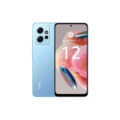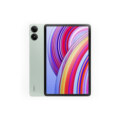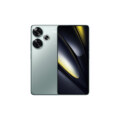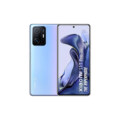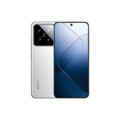Xiaomi Mi Note 10





Specs
General
| Device Type | Xiaomi Redmi Phone |
| Announced | 06 November, 2019 |
| Released | 11 November, 2019 |
| Status | Available |
Design
| Water Resistant | IP54, dust and splash resistant |
| Dimensions | 157.8 x 74.2 x 9.7 mm |
| Weight | 208 g |
| Protection | Glass front (Gorilla Glass 5), glass back (Gorilla Glass 5), aluminum frame |
| Colors | Aurora Green, Glacier White, Midnight Black |
Display
| Refresh Rate | 60 Hz |
| Display Type Display Technology => A number of display technologies and types used in mobile phones => TFT (Thin Film Transistor), IPS (In-Place Switching), OLED (Organic Light Emitting Diode), AMOLED (Active-Matrix Organic Light-Emitting Diode), Super AMOLED (an even advanced version of AMOLED), Resistive Touchscreen (Resistive touchscreens contain two layer of conductive material with a very small gap between them which acts as a resistance), Capacitive Touchsceen (Capacitive touchscreen technology consists of a layer of glass coated with a transparent conductor) | AMOLED |
| Size | 6.47 Inches |
| Resolution | 1080 x 2340 Pixels |
| Pixel Density Pixel Density (PPI) is refers to the concentration of pixels on a particular display, measured in pixels per inch (ppi). Pixel density is calculated by dividing the diagonal pixel resolution of a display by its diagonal size, higher pixel density better display quality. | ~398 ppi |
| Touch Screen | Capacitive Touchscreen, Multitouch |
| Display Protection Display Protection => Gorilla Glass is a special alkali-aluminosilicate glass shield with exceptional damage resistance that helps protect mobile displays from scratches, drops, and bumps of everyday use, It is always better to go for a smartphone with Gorilla Glass for that added protection and peace of mind. | Corning Gorilla Glass 5 |
| Features | 600 nits max brightness, DCI-P3, HDR10 |
| Secondary Display | No |
Camera
| Front Camera | 20 MP, f/2.5, (wide), 1/3.4", 0.8µm |
| Camera Setup | Quad |
| Main Camera Camera is able to capture photographs and usually videos, The most important characteristics of a camera are the resolution (measured in megapixels), lens focus type (fixed or automatic), higher megapixel cameras are known to capture higher quality photos, but not always a good measurement of the photos quality. |
108 MP (7P lens), f/1.7, 25mm (wide), 1/1.33", 0.8µm, PDAF, OIS 12 MP, f/2.0, 50mm (telephoto), 1/2.55", 1.4µm, dual pixel PDAF, 2x optical zoom 8 MP, f/2.0, (telephoto), 1.0µm, PDAF, OIS, 3.7x optical zoom, 5x hybrid zoom 20 MP, f/2.2, 13mm (ultrawide), 1/2.8", 1.0µm 2 MP, f/2.4, (macro) |
| Image | 12032 x 9024 pixels |
| Video | 4K@30fps, 1080p@30/60/120/240fps, 720p@960fps |
| Camera Features | Geo-tagging, touch focus, face detection, HDR, panorama |
| Flash Flash Light => There is commonly two types of flash lights are used in camera mobile phones, LED Flash (LED flash offers lower power consumption with drive circuitry that takes up very little room, LEDs can be strobed faster than any other light source), Xenon Flash (xenon flash produces an extremely intense full-spectrum white light for a very short duration) | Laser AF, Quad-LED dual-tone flash, HDR |
Hardware
| Operating System OS => Every computer system run on a base software called Operating System (OS). Operating System controls all basic operations of the computer (such as smartphone, PDAs, tablet computers and other handheld devices). The Operating System allows the user to install and run third party applications (apps), apps are used to add new functionality to the device. | Android 9 |
| Chipset Chipset is a group of integrated circuits designed to perform one or a more dedicated functions, often with real time computing constraints, Popular smartphones are equipped with more advanced embedded chipsets that can do many different tasks depending on their programming. | Qualcomm Snapdragon 730G |
| CPU CPU (Central Processing Unit) mostly known as processors, CPU processes instructions in order to carry out certain functions that make your device operate properly. Processors are often described as the brain of computers, smartphones and tablets, Smartphones and tablets rely on processors to carry out their every task, Processors are an incredibly important factor in selecting any type of computing device, including your smartphone. | Octa-core (2x2.2 GHz Kryo 470 Gold & 6x1.8 GHz Kryo 470 Silver) |
| Architecture | 64 bit |
| Fabrication | 8 nm |
| GPU GPU (Graphics Processing Unit) is a single-chip processor designed to rapidly manipulate and alter memory to accelerate the creation of images in a frame buffer intended for output to a display, This includes things such as lighting effects, object transformations, and 3D motion. | Adreno 618 |
| RAM (Memory) RAM (Random Access Memory) is a type of computer memory that can be accessed randomly, any byte of memory can be accessed without touching the preceding bytes that allows information to be stored and accessed quickly from random locations. RAM is the most common type of memory found in computer systems, smartphones, tablets and other electronic devices. | 8 GB |
| Internal Storage Internal Storage is a data storage space (flash memory) mostly used in smartphones, tablets and other electronic devices where operating system, apps, music, photos, videos, files and other user data Is stored. | 128 GB |
| Card Slot Memory Card Slot is a special slot for inserting a memory card. Memory cards allow you to expand the phone's built-in memory, A memory card (sometimes called a flash memory card or a storage card) is a small storage medium used to store data such as text, pictures, audio, and video, for use on small, portable or remote computing devices such as mobile phones, mp3 players, digital cameras. | |
| Sensors Sensors are electronic components that detects and responds to some type of input from the physical environment. The specific input could be light, heat, motion, moisture, pressure and location, The output is generally a signal that is converted to use in computing systems, a location sensor, such as a GPS receiver is able to detect current location of your electronic device. | In-display fingerprint sensor, Accelerometer, Gyroscope, Proximity, Compass |
Network
| SIM TYPE SIM (Subscriber Identity Module) is a small card that contains mobile network subscriber's account information. This allows the phone using the card to attach to a mobile network. The SIM card is most commonly associated with GSM and UMTS mobile networks. Moving a SIM card from one phone to another allows a subscriber to switch mobile phones without having to contact their mobile network carrier. SIM cards can also be used by a phone to store limited amounts of data, such as phone numbers and text messages. | Nano SIM |
| SIM Technology | Dual Sim, Dual Standby (Nano-SIM) |
| 2G Network | GSM 850 / 900 / 1800 / 1900 |
| 3G Network | HSDPA 850 / 900 / 1700(AWS) / 1900 / 2100 |
| 4G Network | LTE band 1(2100), 3(1800), 7(2600), 8(900), 20(800) |
Multimedia
| FM Radio | |
| Stereo Speakers | NO |
| Loudspeaker | YES |
| Audio Jack | 3.5mm jack |
| Audio Features | 24-bit/192kHz audio |
Connectivity
| Wi-fi Wi-Fi is a popular wireless networking technology using radio waves to provide high-speed network connections that allows devices to communicate without cords or cables, Wi-Fi is increasingly becoming the preferred mode of internet connectivity all over the world. | Wi-Fi 802.11 a/b/g/n/ac, dual-band, Wi-Fi Direct |
| Bluetooth Bluetooth is a wireless communications technology for exchanging data between mobile phones, headsets, computers and other network devices over short distances without wires, Bluetooth technology was primarily designed to support simple wireless networking of personal consumer devices. | 5.0, A2DP, LE, aptX HD |
| GPS GPS The Global Positioning System is a satellite-based radio navigation system, GPS permits users to determine their position, velocity and the time 24 hours a day, in all weather, anywhere in the world, In order to locate your position, your device or GPS receiver must have a clear view of the sky. | A-GPS, GLONASS, BDS, GALILEO |
| USB | USB Type-C 2.0, USB On-The-Go |
| EDGE EDGE (Enhanced Data GSM Environment) is a wireless network technology generally considered the next step in the 2G network offers data transfer rates up to four times faster than ordinary GSM networks, Generally, EDGE is used for the purpose of wireless data transfer, such as sharing pictures and videos or browsing the Internet via a mobile phone connection. | |
| GPRS GPRS (General Packet Radio Service) is a packet oriented mobile data service on the 2G and 3G cellular communication system's global system for mobile communications (GSM), Generally, GPRS is used for the purpose of wireless data transfer, such as sharing pictures and videos or browsing the Internet via a mobile phone connection. | |
| Speed | HSPA 42.2/5.76 Mbps, LTE-A |
| Wi-fi Hotspot | |
| NFC NFC (Near field communication) is a set of standards for smartphones and similar devices to establish peer-to-peer radio communications with each other by touching them together or bringing them into proximity, usually no more than a few inches. |
Features
| Messaging | SMS(threaded view), MMS, Email, Push Mail, IM |
| Web Browser Web Browser => a web browser is a software application used to locate, retrieve and display content on the World Wide Web, including Web pages, images, video and other files, The primary function of a web browser is to render HTML, the code used to design or markup webpages. | HTML5 |
| Games | Built-in + Downloadable |
| Torch |
Battery
| Battery Type Battery Type => Cell phones run on various kinds of batteries depending on the manufacturer, phone size or shape and features. There are basically four types of cell phone batteries => Lithium Polymer, Lithium Ion, Nickel Metal Hydride and Nickel Cadmium. | Li-Ion (Lithium Ion) |
| Capacity Battery Capacity is a measure (typically in Amp-hr) of the charge stored by the battery, and is determined by the mass of active material contained in the battery. The battery capacity represents the maximum amount of energy that can be extracted from the battery under certain conditions. | 5260 mAh |
| Placement | Non-removable |
| Wireless Charging Wireless Charging (Inductive Charging) uses an electromagnetic field to transfer energy between two objects. This is usually done with a charging station. Energy is sent through an inductive coupling to an electrical device, which can then use that energy to charge batteries or run the device. | No |
| Standby Standby Time is the total amount of time that you can leave your is fully charged, turned on and ready to send and receive calls or data transmissions before completely discharging the battery. | Up to 22 days (estimated) |
| Talk Time Talk Time is the longest time that a single battery charge will last when you are constantly talking on the phone under perfect conditions, Ambient temperature and highly dependent on the cellular network environment such as the distance to the closest cell network tower. | Up to 33 hours (estimated) |
| Music Play | Up to 143 hours (estimated) |
| Extra |
Fast battery charging 30W (58% in 30 min., 100% in 65 min.) USB Power Delivery |
Xiaomi Mi Note 10: Detailed Review
The Xiaomi Mi Note 10, launched in late 2019, was one of the first smartphones to introduce a 108 MP primary camera in a five-camera setup, making it a unique offering in the mid-range market. The phone strikes a balance between premium features and affordability, packing a large battery, a vibrant AMOLED display, and a sleek design. Below is a detailed review of the Xiaomi Mi Note 10, covering its key features, performance, and pros and cons.
Key Specifications
- Display: 6.47-inch AMOLED, FHD+ (2340 x 1080), curved edges
- Processor: Qualcomm Snapdragon 730G
- RAM: 6GB/8GB
- Storage: 128GB/256GB (no expandable storage)
- Rear Cameras:
- 108 MP (f/1.7, wide, OIS)
- 12 MP (f/2.0, telephoto, 2x optical zoom)
- 5 MP (f/2.0, telephoto, 5x optical zoom, OIS)
- 20 MP (f/2.2, ultrawide)
- 2 MP (f/2.4, macro)
- Front Camera: 32 MP (f/2.0)
- Battery: 5260 mAh, 30W fast charging
- Operating System: MIUI 11 based on Android 9 (upgradable to later versions)
- Other Features: In-display fingerprint sensor, Dual SIM, 3.5mm headphone jack, IR blaster
Design & Build Quality
Design:
The Xiaomi Mi Note 10 offers a premium design with its curved glass front and back, sandwiching an aluminum frame. The curved edges of the display and slim bezels create an immersive, bezel-less feel, reminiscent of higher-end flagship devices. The back of the device houses the five-camera module in a vertical array, which protrudes slightly but remains sleek.
The phone is available in three colors:
- Midnight Black
- Glacier White
- Aurora Green
Build Quality:
With Gorilla Glass 5 protection on both the front and back, the Mi Note 10 feels sturdy and durable, though it’s prone to fingerprints and smudges due to the glossy finish. The phone is relatively heavy at 208g, which is noticeable during prolonged one-handed use, but it gives the device a solid, high-quality feel.
Display
Specifications:
- Size: 6.47-inch AMOLED
- Resolution: FHD+ (2340 x 1080)
- Brightness: 600 nits (peak)
- Color Support: HDR10
Performance:
The 6.47-inch AMOLED display is vibrant, offering rich colors and deep blacks, which makes watching videos, playing games, and browsing content a delight. The screen is curved at the edges, similar to flagship designs, and provides a modern, immersive look. The FHD+ resolution ensures sharp visuals, while HDR10 support improves contrast and color depth for media consumption on platforms like YouTube and Netflix.
Outdoor visibility is decent, with the display reaching a peak brightness of 600 nits, making it usable in bright sunlight, although direct sunlight might still present some challenges.
Performance
Processor & RAM:
Powered by the Qualcomm Snapdragon 730G chipset, the Mi Note 10 delivers reliable performance for everyday tasks such as browsing, social media, and video streaming. The 730G is a gaming-centric mid-range processor, allowing for solid gaming performance at medium settings on titles like PUBG Mobile and Call of Duty: Mobile. Paired with 6GB or 8GB of RAM, the phone handles multitasking smoothly, although it may not be as snappy as flagship devices with more powerful chipsets.
While the Snapdragon 730G is capable, it’s not as fast as the Snapdragon 8-series processors used in more expensive models. However, for a mid-range device, the performance is satisfactory for most users who aren’t looking for top-tier gaming or processing power.
Storage:
The Mi Note 10 comes with 128GB or 256GB of internal storage, but it does not offer expandable storage via microSD, which may be limiting for users who store a lot of media or apps.
Camera System
Main Camera: 108 MP (f/1.7, OIS)
The 108 MP primary camera is the headline feature of the Mi Note 10, and it delivers highly detailed photos, especially in well-lit conditions. The camera uses pixel-binning technology to combine 9 pixels into 1, producing 12 MP images with better clarity and less noise. The camera performs well in daylight, offering sharp, vibrant images, but low-light performance can sometimes introduce noise, despite the inclusion of optical image stabilization (OIS).
Telephoto Lenses:
- 12 MP (f/2.0, 2x optical zoom): This lens is optimized for portrait shots, offering excellent depth-of-field effects.
- 5 MP (f/2.0, 5x optical zoom, OIS): The 5x telephoto lens allows for high-quality zoomed-in shots, and with OIS, it performs decently even in lower light conditions. It can digitally zoom up to 50x, though quality drops significantly at higher zoom levels.
Ultrawide Camera: 20 MP (f/2.2)
The 20 MP ultrawide camera offers wide-angle shots, ideal for landscapes or large group photos. While the quality is decent, it isn’t as sharp as the main camera, and images can appear softer, especially at the edges.
Macro Camera: 2 MP (f/2.4)
The 2 MP macro camera allows for close-up shots of objects, but the image quality is relatively basic compared to the main and telephoto cameras. It’s more of a novelty feature for niche photography.
Front Camera: 32 MP (f/2.0)
The 32 MP selfie camera delivers high-resolution selfies with good detail in daylight conditions. The AI beauty mode enhances images for those who prefer smoother facial features, though it may be too aggressive for users who prefer natural-looking photos.
Battery Life
Capacity: 5260 mAh
The 5260 mAh battery is one of the standout features of the Mi Note 10. It easily lasts a full day with heavy usage, including gaming, video streaming, and social media, with some users even able to stretch it into a second day with moderate use.
Charging: 30W fast charging
The phone supports 30W fast charging, which can charge the device from 0 to 100% in just over an hour. While it doesn’t offer wireless charging, the fast wired charging compensates for that omission, making it convenient for users who are always on the go.
Software & Features
Operating System:
The Mi Note 10 originally launched with MIUI 11 based on Android 9, but it has received updates to MIUI 12 and later versions of Android. MIUI offers a wide range of customization options and features, though it does come with some pre-installed bloatware that may not appeal to everyone.
Security:
The in-display fingerprint sensor is responsive and reliable, providing a fast way to unlock the phone. Face unlock is also available, though it’s less secure than the fingerprint option.
Other Features:
- 3.5mm headphone jack: Unlike many newer phones, the Mi Note 10 retains the headphone jack, which is a bonus for those who prefer wired audio.
- IR Blaster: Allows the phone to be used as a remote control for various devices.
Pros & Cons
Pros:
- Impressive Camera System: The 108 MP main camera is a standout feature, producing high-quality, detailed images, especially in good lighting conditions.
- Solid Battery Life: The 5260 mAh battery offers excellent endurance, easily lasting a full day or more.
- Premium Design: The curved AMOLED display and glass body give the phone a premium look and feel.
- Vibrant AMOLED Display: The 6.47-inch AMOLED screen provides rich colors, deep blacks, and supports HDR10.
- Fast Charging: 30W fast charging ensures the battery can be quickly recharged in just over an hour.
- Headphone Jack & IR Blaster: Retaining the headphone jack and IR blaster adds versatility for audio and device control.
Cons:
- No Expandable Storage: Lack of microSD support limits storage options for users who need more space.
- Mid-range Processor: The Snapdragon 730G is adequate for daily tasks but isn’t as powerful as flagship chipsets, particularly for high-end gaming or heavy multitasking.
- Average Low-light Performance: While the camera excels in daylight, low-light performance could be better, with some noise appearing in darker scenes.
- Weight: At 208g, the Mi Note 10 is on the heavier side, which may be cumbersome for some users.
- Bloatware: MIUI comes with several pre-installed apps that may be unnecessary for some users, though they can be uninstalled.
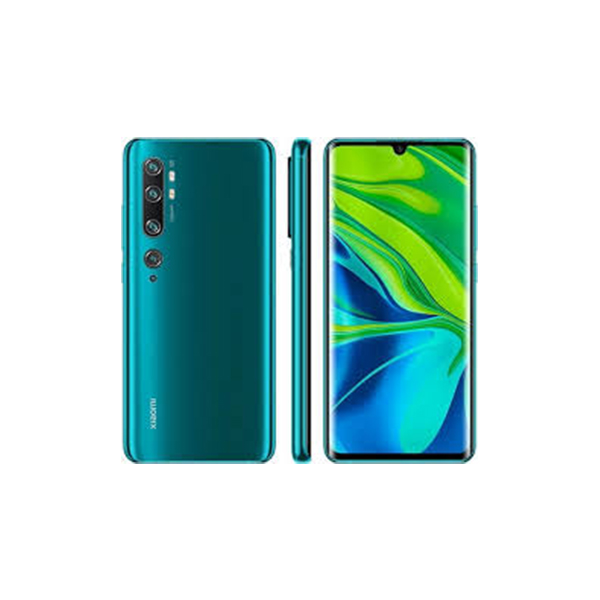
Conclusion
The Xiaomi Mi Note 10 offers a compelling package with its 108 MP camera, vibrant AMOLED display, and long-lasting battery, making it an excellent option for users looking for a premium experience at a mid-range price. While the Snapdragon 730G chipset isn’t flagship-level, it’s more than capable for everyday tasks and light gaming. The phone’s design and build quality rival more expensive models, and its camera system is one of the best in its class.
For users prioritizing camera performance and battery life, the Xiaomi Mi Note 10 is an excellent choice. However, those looking for cutting-edge processing power or expandable storage may want to consider other options. Overall, the Mi Note 10 offers fantastic value, particularly for photography enthusiasts.
Review
Disclaimer Note
All prices in Pakistan is updated daily from the price list provided by local shops and dealers but we can not guarantee that the information / price on this page is 100% correct (Human error is possible), always visit your local shop for exact cell phone cost & rate.


